Water Only Wheatgrass Growing: Sounds too good to be true, right? I thought so too! But trust me, after years of struggling with soil, messy setups, and inconsistent results, I stumbled upon a game-changing method: growing wheatgrass using only water. And I’m here to share all my secrets with you!
Wheatgrass, with its vibrant green blades, has been celebrated for centuries for its potent health benefits. From ancient Egyptians who revered it to modern-day health enthusiasts who swear by its detoxifying properties, wheatgrass has a rich history. But let’s be honest, growing it can be a pain. Soil contamination, mold, and the sheer effort of maintaining the right moisture levels often deter even the most dedicated gardeners.
That’s where this DIY guide comes in. Imagine harvesting fresh, nutrient-packed wheatgrass without the hassle of soil. No more muddy messes, no more worrying about soilborne diseases, just pure, vibrant green goodness ready to be juiced or added to your favorite smoothie. This water only wheatgrass growing method is perfect for apartment dwellers, busy individuals, and anyone looking for a cleaner, simpler way to enjoy the benefits of this superfood. I’ll walk you through each step, from selecting the right seeds to harvesting your first batch, ensuring you achieve success with minimal effort. Get ready to unlock the secrets to effortless wheatgrass cultivation!
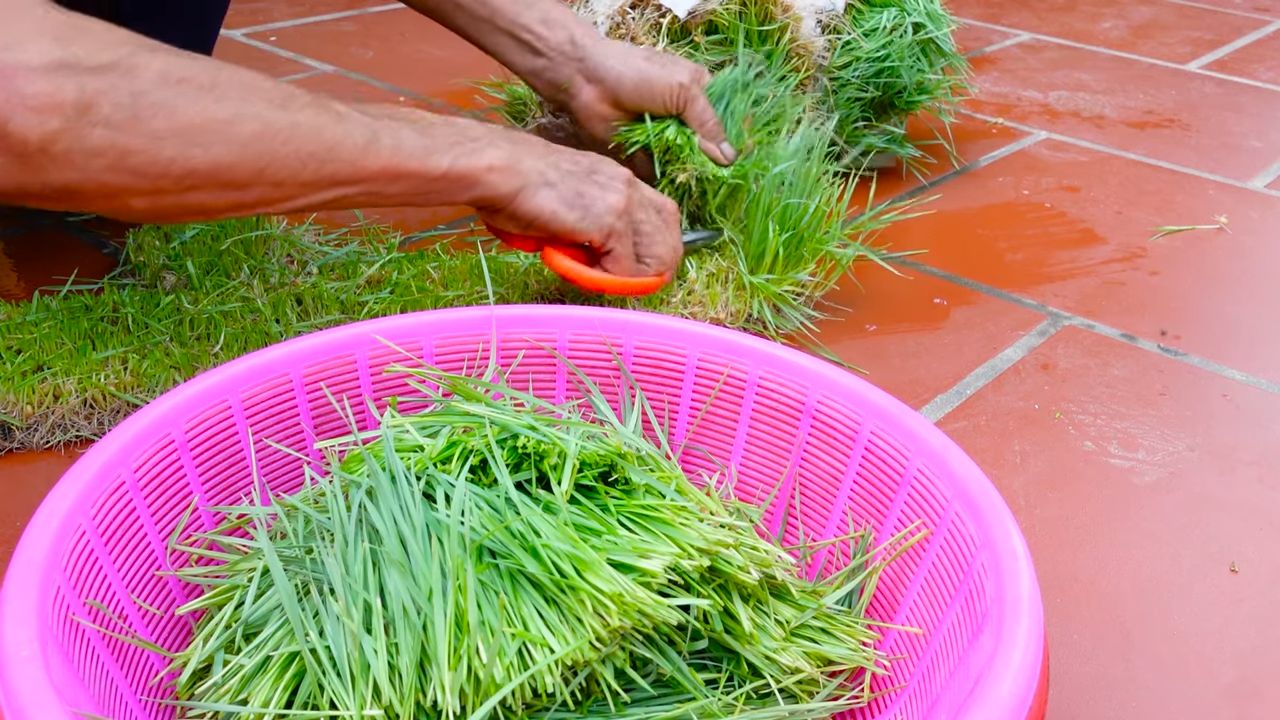
Growing Wheatgrass Only with Water: My DIY Guide for Beginners
Hello dear plant enthusiasts! Today, I’m going to show you how to easily grow wheatgrass with just water. Yes, you read that right – no soil, no fuss! This method is super clean, space-saving, and perfect for anyone who likes simplicity. I’ve tried it myself and I’m amazed at how well it works. Let’s get started!
What You Need:
- Wheat seeds: Make sure they are organic and suitable for sprouting. You can find them in health food stores, organic markets, or online.
- A sprouting vessel: I recommend using a glass container, like a mason jar or a sprouting tray. It’s important that it’s well-ventilated.
- A sieve or cheesecloth: To cover the seeds and drain the water.
- A rubber band: To secure the sieve or cheesecloth to the container.
- Water: Filtered or still mineral water works best.
- Patience: Wheatgrass takes time to grow!
Step-by-Step Instructions:
- Prepare the Seeds:
- First, I rinse the wheat seeds thoroughly under running water to remove dust and any impurities.
- Then, I place the seeds into my sprouting vessel and fill it with plenty of water. The seeds should be completely covered.
- Now, I let the seeds soak for 8-12 hours. This is important to allow them to swell and kickstart the sprouting process. I usually do this overnight.
- Sprouting:
- After soaking, I drain the water and rinse the seeds thoroughly again.
- I cover the container with the sieve or cheesecloth and secure it with the rubber band.
- Now, I place the container in a bright location, but not in direct sunlight. Direct sunlight can burn the sprouts.
- Important: I rinse the seeds 2-3 times a day with fresh water. This prevents mold and keeps the seeds moist. I always turn the container slightly to ensure that all seeds are evenly moistened.
- After 1-2 days, the first small sprouts should be visible.
- Growing:
- Once the sprouts are about 1-2 cm long, they can tolerate a bit more light. I now move the container to a brighter spot, but still out of direct sunlight.
- I continue to rinse the sprouts 2-3 times a day.
- After about 5-7 days, the wheatgrass should be around 5-10 cm tall. It’s now ready for harvest!
Harvesting and Using:
- I cut the wheatgrass with scissors just above the roots.
- The harvested wheatgrass can be used immediately. I love adding it to smoothies or juicing it.
- Tip: Wheatgrass tastes best when freshly harvested. However, you can also store it in the fridge for a few days.
Common Problems and Solutions:
- Mold Formation: If you notice mold, it’s important to remove the affected seeds immediately and rinse the remaining seeds thoroughly. Make sure the container is well-ventilated and rinse the seeds more frequently.
- No Sprouting: If the seeds don’t sprout, there could be various reasons. Perhaps the seeds are too old or not viable. Or, they weren’t soaked long enough. Try fresh seeds and make sure to soak them for long enough.
- Yellow Wheatgrass: Yellowing wheatgrass can indicate insufficient light. Move the container to a brighter location.
Additional Tips for Success:
- The Right Amount of Water: Ensure that the seeds are completely covered with water when soaking. When rinsing, make sure the water drains properly.
- The Right Temperature: Wheatgrass sprouts best at room temperature (about 20-25°C).
- Good Ventilation: Ensure proper ventilation of the container to avoid mold.
- Regular Rinsing: Regular rinsing is key to success.
Why Grow Wheatgrass Only with Water?
I find this method to be brilliant because it offers so many advantages:
- Cleanliness: No dirt, no mess, no problem!
- Space-saving: You only need a small container and some space on your windowsill.
- Simplicity: The method is super easy and great for beginners.
- Speed: You can harvest your own wheatgrass in just a few days.
- Sustainability: You save on soil and fertilizers.
A Few Final Words:
I hope my guide has helped you, and now you’re excited to grow your own wheatgrass with just water. It’s really easy and fun! If you have any questions, feel free to ask in the comments. Wishing you success and fun with your gardening!
The Benefits of Wheatgrass
Wheatgrass is not only easy to grow but also incredibly healthy. Here are some of the benefits I personally appreciate:
- Rich in Nutrients: Wheatgrass is packed with vitamins, minerals, and antioxidants. It contains Vitamin A, C, E, K, B vitamins, as well as iron, calcium, and magnesium.
- Detoxifying: Wheatgrass helps the body break down toxins and supports the liver.
- Energy-boosting: Wheatgrass can provide a natural energy boost without causing jitters.
- Immune-boosting: The nutrients in wheatgrass strengthen the immune system and help prevent illness.
- Digestive: Wheatgrass can improve digestion and reduce bloating.
Wheatgrass in the Kitchen: My Favorite Recipes
I love using wheatgrass in smoothies, but there are many other ways to incorporate it into your diet. Here are some of my favorite recipes:
- Wheatgrass Smoothie: I simply blend a handful of wheatgrass with fruits, vegetables, and some water or juice. My favorite combo is banana, apple, and spinach.
- Wheatgrass Juice: You can also juice wheatgrass. The juice is highly concentrated and has an acquired taste, but it’s incredibly healthy.
- Wheatgrass Salad Dressing: I mix wheatgrass with olive oil, lemon juice, garlic, and herbs to make a delicious salad dressing.
- Wheatgrass Soup: You can add wheatgrass to soups. I usually add it just before serving to retain its valuable nutrients.
Where to Get Wheatgrass Seeds?
As mentioned, it’s important to use sprouting wheatgrass seeds in organic quality. Here are a few tips on where to find them:
Online Shops: Many online stores offer sprouting seeds. Make sure the shop is reputable and the seeds are organic.
Health Food Stores: Health food stores often have a great selection of sprouting seeds.
Organic Shops: Organic shops often carry wheatgrass seeds as well.
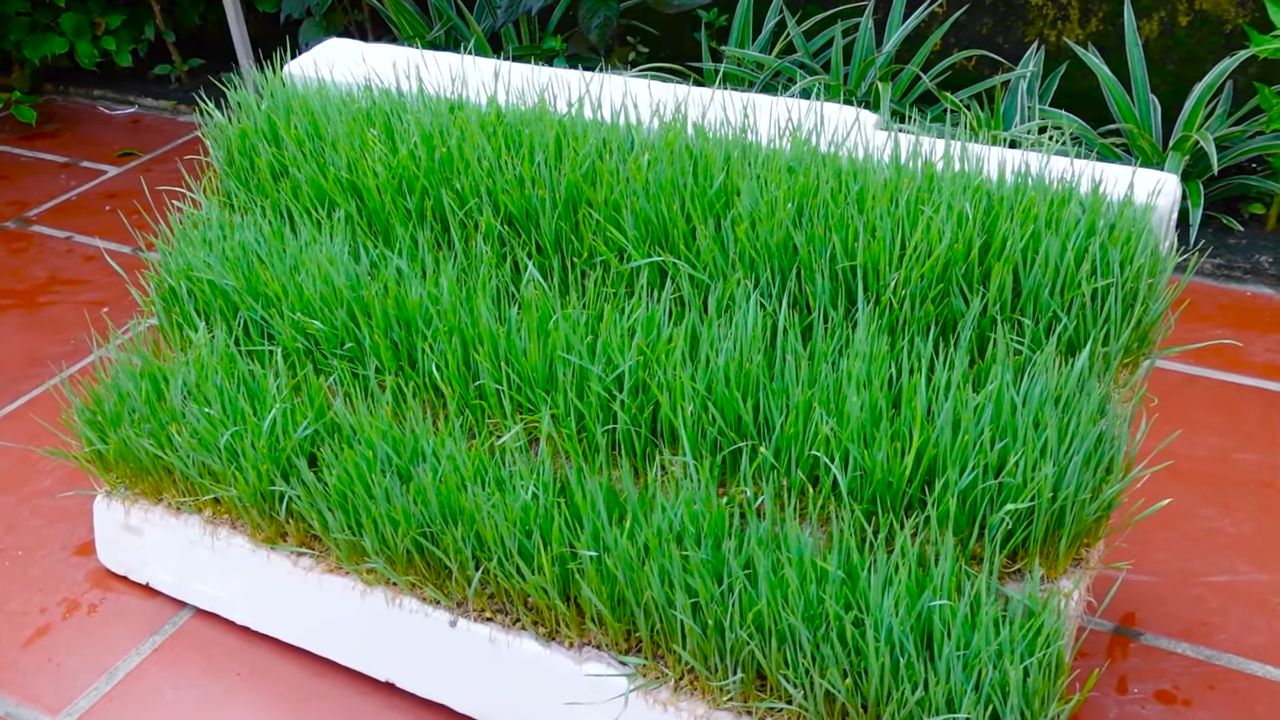
Conclusion
So, there you have it! Growing wheatgrass using only water is not just a cost-effective alternative to buying it pre-grown; it’s a deeply satisfying experience that connects you directly to the source of your healthy greens. We’ve walked you through the simple steps, highlighting the ease and accessibility of this method. Forget complicated setups and expensive equipment. All you need is wheatgrass seeds, water, and a little patience to unlock a vibrant, nutrient-rich harvest right in your own home.
This method is a must-try for several reasons. First and foremost, it puts you in complete control of the growing process. You know exactly what’s going into your wheatgrass – pure, unadulterated water. No hidden chemicals, no questionable additives, just the natural goodness of the seed itself. This is particularly important for those seeking organic and truly natural sources of nutrition.
Secondly, it’s incredibly budget-friendly. The cost of wheatgrass seeds is significantly lower than buying pre-grown trays, especially if you consume wheatgrass regularly. Over time, the savings add up, making this a sustainable and economical way to incorporate this superfood into your diet.
Thirdly, it’s surprisingly easy! Even if you don’t have a green thumb, you can successfully grow wheatgrass using this water-only method. The steps are straightforward, and the process is relatively hands-off. With a little attention to detail and consistent watering, you’ll be enjoying fresh wheatgrass in no time.
But the benefits don’t stop there. Growing your own wheatgrass is also a fantastic way to reduce your environmental footprint. By eliminating the need for transportation and packaging associated with store-bought wheatgrass, you’re contributing to a more sustainable lifestyle.
Ready to take your wheatgrass journey to the next level? Consider experimenting with different varieties of wheatgrass seeds. Some varieties may offer slightly different flavors or nutrient profiles. You could also try varying the sprouting time to see how it affects the sweetness and texture of the grass. Another interesting variation is to experiment with different types of water. While tap water works perfectly well, you could try using filtered water or even rainwater for a potentially enhanced growing experience.
Don’t be afraid to get creative and personalize the process to suit your own preferences and needs. The beauty of this DIY trick is its adaptability and simplicity.
We wholeheartedly encourage you to give this water-only wheatgrass growing method a try. It’s a rewarding and empowering experience that will not only provide you with a healthy and delicious source of nutrition but also connect you to the natural world in a meaningful way.
Once you’ve tried it, we’d love to hear about your experience! Share your tips, tricks, and photos with us in the comments section below. Let’s build a community of wheatgrass enthusiasts and learn from each other’s successes and challenges. Your feedback is invaluable and will help us refine and improve this guide for future growers. So, go ahead, get your seeds, grab some water, and embark on your own wheatgrass adventure today! We’re confident you’ll be amazed at how easy and rewarding it is to grow your own fresh, vibrant wheatgrass using nothing but water.
Frequently Asked Questions (FAQ)
What kind of wheatgrass seeds should I use?
The best wheatgrass seeds to use are hard red winter wheat seeds. These are readily available online or at most health food stores. Make sure to purchase seeds that are specifically labeled for sprouting or growing wheatgrass, as these are typically untreated and safe for consumption. Avoid seeds that are intended for agricultural purposes, as they may have been treated with chemicals. Organic wheatgrass seeds are always a good choice if you’re looking for the purest and most natural option.
How much wheatgrass should I consume daily?
A typical serving of wheatgrass juice is about 1-2 ounces. It’s best to start with a smaller amount, such as 1 ounce, and gradually increase it as your body adjusts. Wheatgrass is a potent detoxifier, and consuming too much too quickly can sometimes lead to mild side effects like nausea or headaches. Listen to your body and adjust the dosage accordingly. Remember, consistency is key. Regular, moderate consumption is more beneficial than occasional large doses.
How long does it take for wheatgrass to grow using the water-only method?
Generally, it takes about 7-10 days for wheatgrass to reach a harvestable height using the water-only method. The exact timeframe can vary depending on factors such as temperature, humidity, and the quality of the seeds. You’ll know it’s ready to harvest when the grass is about 4-6 inches tall and has a vibrant green color.
What if mold starts to grow on my wheatgrass?
Mold growth is a common concern when growing wheatgrass, especially in humid environments. To prevent mold, ensure good air circulation around your growing tray. Rinse the seeds thoroughly before soaking and sprouting. Avoid overcrowding the seeds in the tray. If you do notice mold, carefully remove the affected areas with a clean utensil. A small amount of mold is usually harmless, but if the mold is extensive, it’s best to discard the batch and start over. Using a diluted hydrogen peroxide solution (1 part hydrogen peroxide to 10 parts water) can also help to inhibit mold growth.
Can I reuse the wheatgrass seeds that didn’t sprout?
It’s generally not recommended to reuse wheatgrass seeds that didn’t sprout. These seeds may be damaged or non-viable, and reusing them can increase the risk of mold growth and contamination. It’s best to start with a fresh batch of seeds each time to ensure optimal growth and a healthy harvest.
How do I harvest the wheatgrass?
To harvest your wheatgrass, simply use a pair of clean scissors or a sharp knife to cut the grass close to the base. It’s best to harvest the wheatgrass just before you plan to use it, as it will retain its freshness and nutrients for longer. Avoid pulling the grass out by the roots, as this can damage the remaining grass and make it more susceptible to mold.
How should I store harvested wheatgrass?
Harvested wheatgrass is best used immediately for optimal nutritional value. However, if you need to store it, wrap it loosely in a damp paper towel and place it in a sealed container in the refrigerator. It will typically stay fresh for up to a week. Be sure to check it regularly for any signs of spoilage.
Can I grow wheatgrass outdoors using the water-only method?
While it’s possible to grow wheatgrass outdoors using the water-only method, it’s important to consider the environmental conditions. Wheatgrass prefers a cool, shaded environment. Direct sunlight can scorch the grass and inhibit growth. If you choose to grow it outdoors, make sure to provide adequate shade and protection from extreme temperatures. Indoor growing is generally more reliable and easier to control.
Is wheatgrass safe for everyone to consume?
While wheatgrass is generally safe for most people, some individuals may experience mild side effects such as nausea, headaches, or diarrhea, especially when first starting to consume it. People with wheat allergies or celiac disease should avoid wheatgrass. It’s always a good idea to consult with a healthcare professional before adding wheatgrass to your diet, especially if you have any underlying health conditions or are taking medications.
What are the nutritional benefits of wheatgrass?
Wheatgrass is a nutritional powerhouse, packed with vitamins, minerals, enzymes, and antioxidants. It’s a good source of vitamins A, C, and E, as well as iron, calcium, and magnesium. Wheatgrass is also rich in chlorophyll, which is believed to have detoxifying and cleansing properties. Regular consumption of wheatgrass can help to boost energy levels, support the immune system, and promote overall health and well-being.


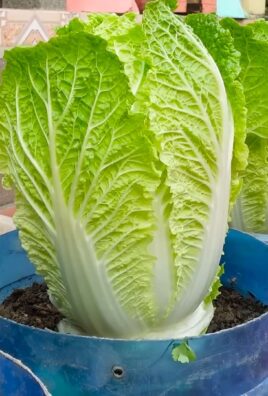
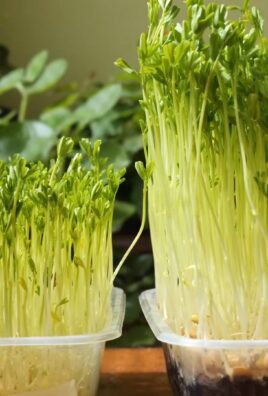
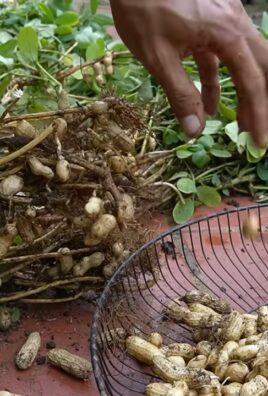
Leave a Comment